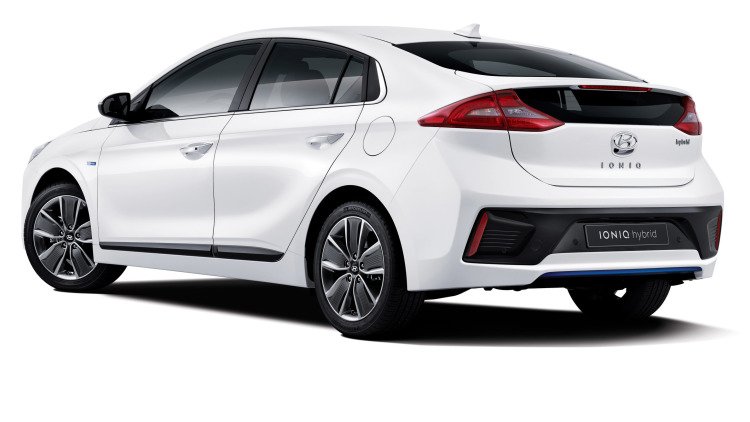Eight Things to Know About the New Hyundai Ioniq Hybrid

And the compact hatchback delivered on that promise during a test drive this week on the northern outskirts of Seoul.
On largely deserted roads just outside the heavily fortified Demilitarized Zone dividing South Korea from its communist neighbor to the north, the Ioniq performed well.
The car was at its best in sport mode on winding highways and narrow country lanes, where tank traps and army platoons on patrol provided a disquieting backdrop. Sport mode makes the most of the car’s six-speed, dual-clutch transmission, which delivers a sportier feel than the continuously variable transmission on rivals such as the Toyota Prius.
Yet, despite the sporty shifting, the car does 0 to 100 km/h in a lackluster 10.3 seconds.
The preset eco mode was ideal for the traffic jams encountered on my way back to town.
On the outside, the car’s handsome, understated good looks are enhanced by a coupelike silhouette, a squared-off front fascia and a planted, low and wide stance.
Here are eight other things to know about the new car, which is already on sale in South Korea and is expected to arrive in the United States in the third quarter.
- Hyundai says the Ioniq is the first car to be offered as a regular hybrid, a plug-in hybrid or an all-electric variant. The standard hybrid, Hyundai’s first dedicated hybrid, goes on sale first, followed by the other versions. The EV debuts in South Korea later this year.
- The car’s super-streamlined design achieves a sleek drag coefficient of 0.24. That matches the fourth-generation Prius and is among the best in the industry.
- Hyundai packs the car with advanced safety systems such as automatic emergency braking, lane-keep assist, blind-spot detection and rear cross-traffic alert.
- In the South Korean market, the car achieves a combined fuel economy rating of 22.4 kilometers per liter. That beats the Prius’ local rating of 21 km per liter. The EPA has not yet given the Ioniq a U.S. fuel economy rating.
- Dual-zone climate control can be set to “driver only” to ease the load on the car’s heating and air-conditioning system.
- Interior door covers made from recycled plastic, powdered wood and volcanic stone are eco-friendly and 20 percent lighter than the company’s conventional cladding material.
- The car comes equipped to handle Apple CarPlay and Android Audio connectivity systems, and it offers a wireless charging pad for mobile phones.
- Engineers tackled noise vibration and harshness by increasing insulation in the dash, adding damping in the floor and to the fillings of the A- and B-pillars, deploying thicker window glass and adding a noise-canceling film to the windshield. It shows in a quiet ride.


